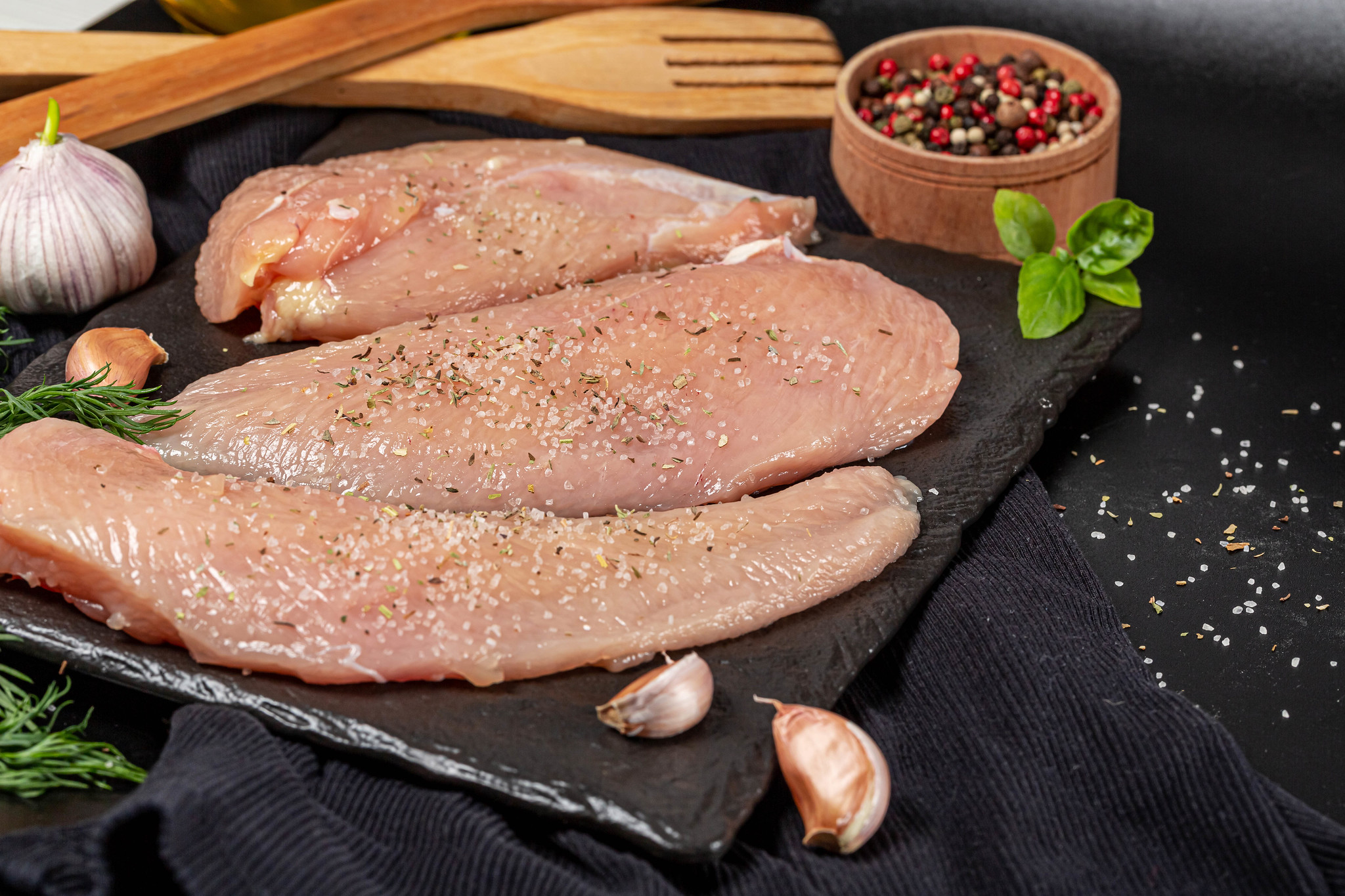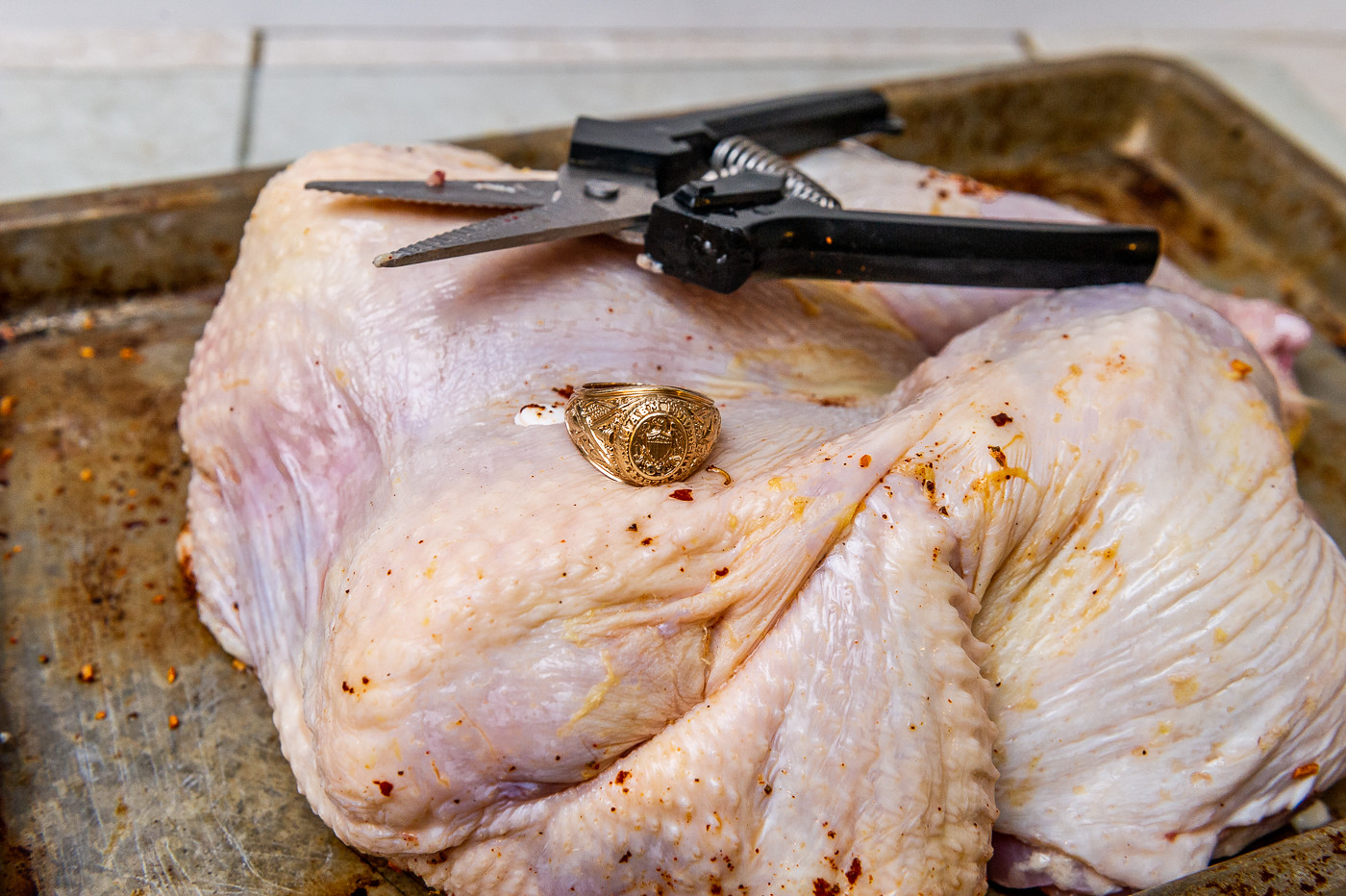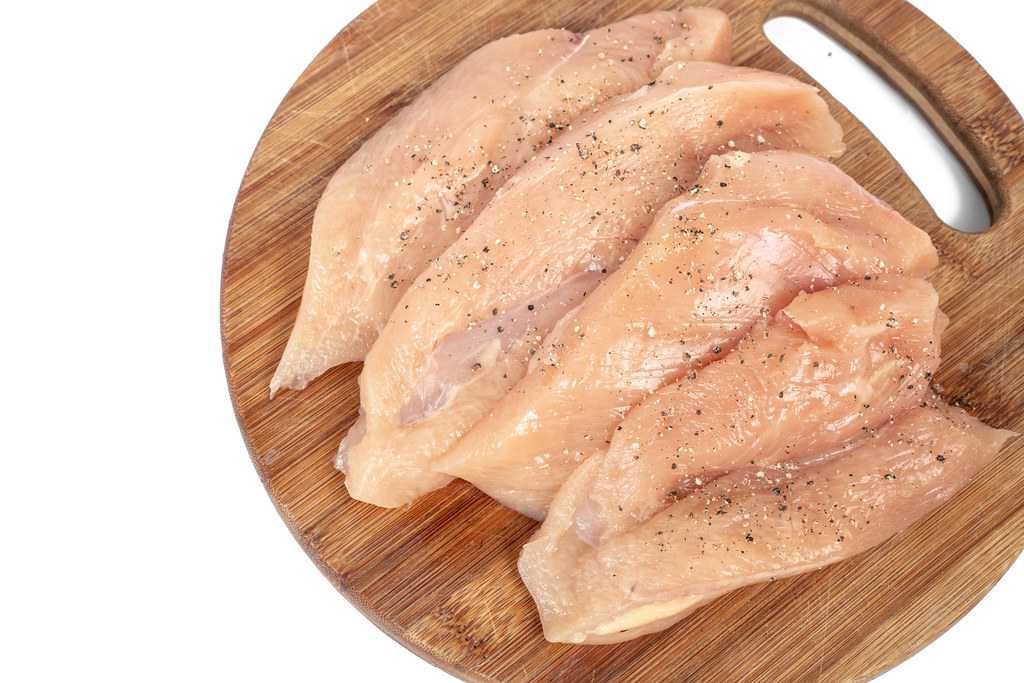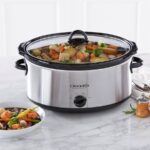If you are one of the many aspiring home cooks out there, then this blog post is for you! When it comes to cooking chicken breasts, understanding how much each breast weighs on average and how many per pound can help you plan meals accurately. Knowing How Many Chicken Breasts In A Pound can also save time when grocery shopping or menu planning and make sure that your recipes turn out just right. In this blog post we will explain why knowing individual serving sizes matters and provide helpful tips which will allow you to measure servings with ease – so let’s get started!

Contents
Different types of chicken breasts
Different types of chicken breasts can vary in size, but on average, you should expect to get about four chicken breasts per pound. This means that if you are trying to serve eight people for dinner, then you would need two pounds of chicken breasts. It is important to note that these servings are based off standard serving sizes and not necessarily an exact number – so depending on how large your chicken breasts are, the number could be slightly higher or lower than four per pound.
Why is it important to know chicken breasts in a pound?
Knowing How Many Chicken Breasts In A Pound is important for a few reasons. Firstly, it helps you to plan meals more accurately and prevents you from buying too much or too little chicken breasts. Additionally, knowing How Many Chicken Breasts In A Pound can also help you figure out how much of each ingredient you need for recipes – this ensures that your recipes turn out exactly as intended!
When measuring servings, it is important to use an accurate scale and measuring cups or spoons. Start by placing the food item on the scale and adjusting the measurements until they match what is stated in the recipe.

Factors that can impact chicken breast weight
There are a few factors that can impact How Many Chicken Breasts In A Pound. The first is the type of chicken breast you are using – different varieties can vary in size and weight, so it is important to take this into account when measuring servings. Additionally, the age and breed of the bird can also affect How Many Chicken Breasts In A Pound, as older birds tend to have larger breasts than younger ones. Lastly, How Many Chicken Breasts In A Pound can be affected by how long you cook them for as well – overcooking can lead to fewer breasts per pound due to shrinkage.
How much does 1 chicken breast weigh?
On average, 1 chicken breast weighs around 4-6 ounces. This means that if you are trying to serve eight people for dinner, then you will need approximately two pounds of chicken breasts. However, it is important to note that this can vary based on the type and size of the chicken breasts – so it is always a good idea to weigh them before cooking if possible.
Knowing How Many Chicken Breasts In A Pound is essential for accurate meal planning and ensuring that your recipes turn out right. Different types of chicken breasts can vary in size, but on average you should expect four per pound – although this number can be slightly higher or lower depending on the size of the individual pieces.
How many chicken breasts in a pound?
How many small-sized chicken breasts are in a pound?
On average, you should expect to get four small-sized chicken breasts per pound. However, it is important to note that this number can vary based on the type and size of the individual pieces. To ensure accuracy when measuring servings, it is always a good idea to use an accurate scale and measuring cups or spoons.
How many average-sized chicken breasts are in a pound?
On average, you should expect to get three average-sized chicken breasts per pound. However, it is important to note that this number can vary based on the type and size of the individual pieces.
How many large-sized chicken breasts are in a pound?
On average, you should expect to get two large-sized chicken breasts per pound. However, it is important to note that this number can vary based on the type and size of the individual pieces. To ensure accuracy when measuring servings, it is always a good idea to use an accurate scale and measuring cups or spoons.
How many extra-large-sized chicken breasts are in a pound?
On average, you should expect to get one extra-large-sized chicken breast per pound. However, it is important to note that this number can vary based on the type and size of the individual pieces. To ensure accuracy when measuring servings, it is always a good idea to use an accurate scale and measuring cups or spoons. Read more at yongkangstreetnyc.com.

Chicken breast nutrition facts
Chicken breast is a great source of lean protein, and it is also packed with other essential nutrients such as iron and vitamin B6. Chicken breast can be cooked in a variety of ways to make delicious meals that are both healthy and tasty!
The nutritional value of chicken breasts varies slightly depending on the type and size, but the general nutrition facts are approximately:
Calories: 150
Fat: 3g
Carbohydrates: 0g
Protein: 30g
Sodium: 70mg
Vitamin B6: 25% of the daily recommended value
Iron: 8% of the daily recommended value
Read on to learn more: how long to air fry chicken wings at 400
Chicken breast nutrition recipes
There are countless healthy and delicious recipes that you can make with chicken breasts! Here are just a few ideas to get you started:
– Grilled Chicken Breasts with Rosemary & Lemon
– Baked Garlic Parmesan Chicken Breasts
– Slow Cooker Italian Chicken
– Sheet Pan Honey Mustard Chicken Breasts
– Spicy Chili Lime Roasted Chicken Breasts
No matter which recipe you choose, your family is sure to be delighted by the delicious meals made with How Many Chicken Breasts In A Pound.
Tips on how to measure serving sizes of chicken breasts:
– Use a kitchen scale to accurately weigh the chicken breasts.
– Measure out ¼ cup or 2 ounces of cooked chicken for a single serving size.
– If possible, pre-weigh and portion the chicken before cooking to ensure accuracy in measuring servings.
– Invest in kitchen tools such as measuring spoons and cups to help you measure portions of smaller ingredients like herbs, spices, and sauces.
These tips will help you get an accurate measurement How Many Chicken Breasts In A Pound so that your recipes turn out just right!

Conclusion: How Many Chicken Breasts In A Pound?
The number of chicken breasts in a pound can vary depending on the size and type of the individual pieces. On average, you should expect to get four small-sized chicken breasts per pound, three average-sized chicken breasts per pound, two large-sized chicken breasts per pound, or one extra-large-sized chicken breast per pound. It is always important to use an accurate scale and measuring tools when measuring out servings for recipes. With these tips, you will be sure to know How Many Chicken Breasts In A Pound!
FAQ chicken breasts in a pound
How many chicken breasts are in 1 pound?
Ever wondered about the peculiar variety in chicken breast sizes? Prepare to be amazed! Generally, a skinless, boneless chicken breast flaunts a dainty weight of 6 ounces. However, when it hatches into the big world of pounds, you can expect to meet about 2.66 of its siblings in a 1-pound soiree. Sometimes, they can even show off by ranging from a minimal 4 ounces to a staggering 10 ounces each!
How many pounds is 2 chicken breasts?
Wondering how much 2 scrumptious boneless chicken breasts weigh? You’ll be delighted to know they’re approximately a whole pound of deliciousness!
How many pounds are 3 chicken breasts?
Feast your eyes on this juicy tidbit: for each pound of succulent chicken love, expect 2-3 magnificent breasts. Size matters, though – one pound boastfully boasts about 454 grams.
How many grams of chicken breast is 1 pound?
Featherless Frenzy: Discover the ever-changing cost of a pound of boneless chicken breast in America’s urban jungles! Unravel the poultry puzzle with FRED data from St. Louis – can you guess the price?
How many chicken breasts are usually in a pound?
Feast your eyes on this scrumptious fact! A succulent, skinless, boneless chicken breast typically tips the scale at a delightful 6 ounces. In a symphony of poultry proportions, 1 pound of these tantalizing treats contains roughly 2.66 chicken breasts. And for the curious carnivore, they can range in weight from a dainty 4 ounces to a whopping 10 ounces each!
How many pieces of chicken are in a pound?
Discover the fascinating world of chicken weight! Did you know that 1 pound of chicken can be either 2-3 succulent boneless breasts or 3-4 delightful boneless thighs? It all depends on the size of our feathery friend!
How much does 1 pound of chicken breast feed?
Looking to delight a fabulous four? Try a pound of scrumptious, boneless, skinless chicken to tantalize their taste buds!
How many pounds of chicken breast do I need?
Feeding your hungry guests? To satisfy their cravings, serve approximately 10 ounces of scrumptious bone-in chicken for each person, be it juicy breasts or succulent thighs. This portion is perfect alongside 2-3 delightful side dishes, ensuring a mouthwatering feast for all – whether fried, grilled or any other way you love your chicken!
How many pounds of chicken is normal?
Ever wondered about the typical weight of our feathery friends, the chickens? While their breeds boast diverse sizes and appearances, from extravagant feathers to beefed-up muscles, these clucking creatures tend to tip the scales at an average of 5.7 pounds!
How many chicken breasts is 1 pounds?
Feast your eyes on this fantastic fowl fact! A delectable, skinless, boneless chicken breast typically tips the scale at around 6 ounces. In a pound full of clucking goodness (that’s 16 ounces), you’ll find a squad of 2.66 chicken breasts! And for those curious about the outliers – you’ll see some as light as 4 ounces and others weighing in at a whopping 10 ounces.

Chef Yong Kang has over 20 years of experience cooking in the finest restaurants, and is excited to present their vision to you and all our guests. Our caring and committed staff will ensure you have a fantastic experience with us.
We are also available for private events:, business lunches, dinners, and more. We would love to discuss how to be a part of your next event.Our restaurant refuses to compromise on quality, which is why we source our fresh ingredients from local farmers’ markets.










